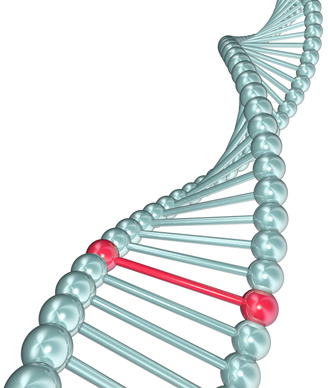NF1 Mutation Present in Many BRAF, NRAS Wildtype Melanomas
Whole-exome sequencing found that mutations of the NF1 gene are an important driver mutation in melanoma, and the third most frequently mutated gene.
Image © iQoncept / Shutterstock.com

Whole-exome sequencing found that mutations of the NF1 gene are an important driver mutation in melanoma. It is the third most frequently mutated gene in melanoma, behind BRAF and NRAS, a finding that could yield more targeted therapies in the future.
In the new study, researchers led by Ruth Halaban, PhD, of Yale University School of Medicine in New Haven, Connecticut, conducted whole-exome sequencing of 213 melanoma samples. Results of the analysis were published online ahead of print in Nature Genetics.
Only three genes were mutated in at least 10% of the melanoma samples: BRAF, NRAS, and NF1. BRAFV600 mutations were seen in 38.5% of samples (82 of 213), while 58 NRAS (and 3 HRAS) mutations were seen in 28.6% of melanomas. Two of the melanoma samples were BRAF-NRAS double mutants.
There were 42 NF1 mutant melanomas, and most of them (38 of 42, 90%) “harbored mutations of the inactivating or predicting damaging type,” according to the researchers. Of those, most (26 of 38) occurred in melanomas that were wild-type for both BRAF and NRAS. Among the 56 tumors with neither of those more common mutations, 46.4% were NF1 mutants.
Melanomas with NF1 mutations had significantly more somatic mutations, and they occurred in significantly older patients (P = .017) than other melanomas. There was no difference, however, with regard to overall survival of the patients when compared to BRAF-mutant, RAS-mutant, and those melanomas wild-type for all three genes.
Based on previous reports, the authors also tested the effect of selumetinib, a MEK inhibitor currently in development. On a panel of 21 melanoma cell lines-10 NF1 mutant and 11 wild-type; 6 of the 10 mutant lines were highly sensitive to the drug, while 4 were highly resistant, suggesting suppression of NF1 is not always correlated with response to MEK inhibition.
Importantly, NF1 mutation does not appear to be solely responsible for melanoma formation, the authors noted. “Loss of NF1 requires more accompanying changes to make a tumor,” she explained. “Our study identified changes in about 100 genes that are present only in the malignant cells and are likely to be causative,” Halaban said in a press release. “This panel of genes can now be used in precision medicine to diagnose malignant lesions and can be applied to personalized cancer treatment.”